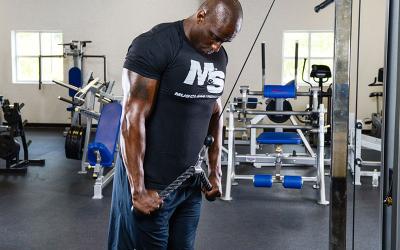
In the dynamic landscape of fitness, one approach has been gaining significant traction for its practicality and effectiveness – functional training. Unlike traditional workout routines that often isolate muscle groups, functional training focuses on enhancing overall movement patterns and daily activities. This comprehensive guide aims to revolutionize your fitness routine by delving into the principles, exercises, and benefits of functional training.
I. Understanding Functional Training
A. Core Principles
- Movement as a Foundation: Functional training revolves around movements that mimic real-life activities. Instead of isolating muscles, exercises engage multiple muscle groups, emphasizing the integration of strength, stability, and flexibility.
- Individualized Workouts: Recognizing that every individual has unique movement patterns and requirements, functional training encourages personalized workouts tailored to specific needs and goals.
II. Key Components of Functional Training
A. Full-Body Exercises
- Squat Variations: Squats form a foundational element, targeting the lower body, core, and back. Variations like goblet squats, pistol squats, and sumo squats ensure a diverse workout.
- Lunges and Step-Ups: These exercises enhance balance and stability while strengthening the muscles used in everyday activities like walking and climbing stairs.
- Deadlifts: Focusing on the posterior chain, deadlifts improve posture, strengthen the back, and promote overall stability.
B. Stability and Balance
- BOSU Ball Exercises: Incorporating a BOSU ball challenges stability, working the core and lower body. Movements like BOSU ball squats and lunges enhance balance and coordination.
- Balance Board Workouts: Utilizing a balance board engages stabilizing muscles, improving overall balance and proprioception.
III. Functional Training Benefits
A. Improved Daily Functionality
- Enhanced Mobility: Functional training promotes flexibility and range of motion, translating into improved daily movements and reduced risk of injuries.
- Practical Strength: By focusing on movements relevant to daily activities, functional training builds practical strength, making routine tasks easier and more efficient.
B. Injury Prevention
- Joint Stability: Strengthening stabilizing muscles around joints contributes to enhanced joint stability, reducing the risk of injuries.
- Correcting Imbalances: Functional training helps identify and address muscular imbalances, promoting a more symmetrical and injury-resistant body.
IV. Incorporating Functional Training into Your Routine
A. Creating a Functional Workout Plan
- Assessment of Movement Patterns: Before designing a plan, assess your movement patterns and identify areas that need improvement. This can be done through professional guidance or self-awareness.
- Balancing Components: Ensure a balance between strength, stability, and flexibility exercises. Tailor the plan to suit your fitness level and gradually progress as your capabilities improve.
B. Sample Functional Workout Routine
Warm-Up:
- Dynamic stretching: Arm circles, leg swings, torso twists.
- Cardiovascular warm-up: Jumping jacks, high knees, or a brief jog.
Main Workout:
- Functional Squats: Goblet squats, followed by medicine ball throws against a wall.
- Lunges and Balance Exercises: Walking lunges combined with balance board exercises.
- Core Activation: Planks, Russian twists, and stability ball exercises.
- Full-Body Stability: BOSU ball exercises, incorporating push-ups, squats, and lunges.
Cool Down:
- Static stretching: Focus on major muscle groups, holding each stretch for 15-30 seconds.
- Mindful breathing: Incorporate deep, diaphragmatic breaths to aid recovery.
V. Challenges and Considerations
A. Potential Challenges
- Initial Discomfort: Adapting to functional training may cause initial discomfort as your body adjusts to new movement patterns.
- Equipment Accessibility: While many exercises can be done with minimal equipment, some may require access to specific tools like stability balls, BOSU balls, or balance boards.
B. Consultation and Progression
- Consultation with Professionals: Before embarking on a functional training journey, consider consulting with fitness professionals or physical therapists to ensure suitability, especially for individuals with pre-existing conditions.
- Gradual Progression: Start with foundational movements and gradually progress to more complex exercises as your strength and stability improve.
VI. Conclusion: Elevate Your Fitness Experience
Functional training stands as a transformative approach to fitness, providing a holistic and practical perspective on physical well-being. By incorporating movements that align with real-life activities, this guide encourages individuals to revolutionize their fitness routines. Whether you’re a seasoned athlete or a fitness novice, embracing functional training can lead to enhanced daily functionality, reduced injury risks, and a renewed sense of overall well-being. Remember, the key lies in understanding your body, tailoring workouts to your needs, and gradually progressing towards a fitter and more functional version of yourself. As you embark on this journey, enjoy the versatility and rewards that functional training brings to your fitness experience.